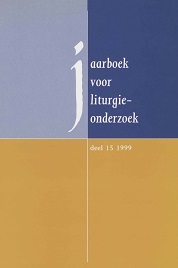Over de samenhang tussen de sacramentsnis en het Heilig Graf in het middeleeuwse kerkinterieur
Abstract
This article gives an outline of the coherence between the Easter Sepulchre and the aumbry in the medieval church interior. In the course of the Middle Ages, the Easter Sepulchre develops as the mise-en-scene for the easter liturgy. In cases of deposition of the host, a close connection with the aumbry can be observed. As both the Easter Sepulchre and the aumbry serve as a receptacle for the consecrated host, conceived as the true body of Christ, the liturgical basis for mutual influence is presupposed. This assumption is confirmed by the theological conception of the aumbry as sepulchrum domini, resulting in a number of “sacrament-towers” modelled after the Anastasis in Jerusalem. There are clear parallels in the design of Easter Sepulchres and aumbries in the Middle Ages, and both are sometimes combined in one monumental unity. In general, they can be found within very short distance in the north wall of the chancel. This points out to the possibility that one niche sometimes served joint purposes. In churches where two or three aumbry-like structures can be found, one possibly had a function as an Easter Sepulchre. The same might be the case for one of the niches found in many Western European churches. Thus, an image of mutual influence between the Easter Sepulchre and the aumbry comes to light, wherein some specific features of both elements are put in a new perspective.


